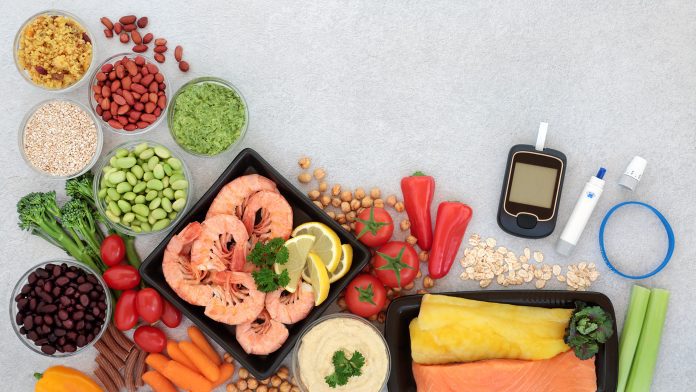
Following a low glycaemic diet can provide additional benefits to drug or insulin therapy for controlling diabetes, new research has suggested.
A study published in the BMJ found that diabetic individuals who followed a low glycaemic diet saw a small but important improvement in blood sugar levels, cholesterol, weight, and other risk factors.
Researchers say the findings suggest that following a low glycaemic diet could be especially effective as an additional treatment to help those with diabetes better control their blood glucose levels.
Low-GI foods
The glycaemic index (GI) rates how quickly different foods affect blood sugar levels. Previous research has shown that low-GI foods, such as vegetables, most fruits, pulses, and wholegrains, can help to steady blood sugar levels and reduce the risk of heart disease for diabetics.
Based on such research, global clinical guidelines recommend a low GI or GL (glycaemic load) diet for people with diabetes. However, the last European Association for the Study of Diabetes (EASD) guidelines were published over 15 years ago.
To provide more recent research to inform the update of the EASD guidelines, researchers set out to investigate the effect of low GI/GL dietary patterns on blood sugar control and other known risk factors in diabetes. To do so, they analysed 27 randomised controlled trials published up to May 2021 investigating the effect of diets with low GI/GL in diabetes for three or more weeks.
A total of 1,617 participants with Type 1 or 2 diabetes were involved in the trials. Most participants were middle-aged, overweight, or obese with moderately controlled Type 2 diabetes treated with drugs or insulin. The trials were of varying quality, but the researchers were able to assess the certainty of evidence using the recognised GRADE system.
The findings showed that low-GI/GL dietary patterns were associated with small but clinically meaningful reductions in blood sugar levels (HbA1c), compared with higher-GI/GL control diets. Reductions also occurred in other risk factors, including fasting glucose (blood sugar levels after a period of fasting), LDL cholesterol, body weight, and C-reactive protein (a chemical associated with inflammation), but not blood insulin levels, HDL cholesterol, waist circumference, or blood pressure.
The researchers concluded that the evidence was high for a reduction in blood sugar levels and moderate for most other outcomes. However, they do note some limitations that may have affected results, such as imprecision in the evidence for the effect of low GI/GL dietary patterns on LDL cholesterol and waist circumference, and the small number of available trial comparisons for blood pressure and inflammatory markers.
Limitations
In conclusion, the researchers said the findings show that low GI/GL dietary patterns “are considered an acceptable and safe dietary strategy that can produce small meaningful reductions in the primary target for glycaemic control in diabetes, HbA1c, fasting glucose, and other established cardiometabolic risk factors.
“Our synthesis supports existing recommendations for the use of low GI/GL dietary patterns in the management of diabetes.”






















